


One of my friends at the office, George Price, once lived in London, and in fact
was born in Paris. When he heard that I would be visiting both places, he
very kindly provided some helpful suggestions for this tourist -- where to
exchange money, how much to tip, where to eat, and best of all, where I could
find some interesting places I hadn't visited before. When I told George I
was planning to re-visit the "Perfect London Walk," he suggested I might also
want to try his favorite walk -- a stroll along Regent's Canal from Little Venice,
past Regent's Park, and on to Camden Town. Sounded good to me.
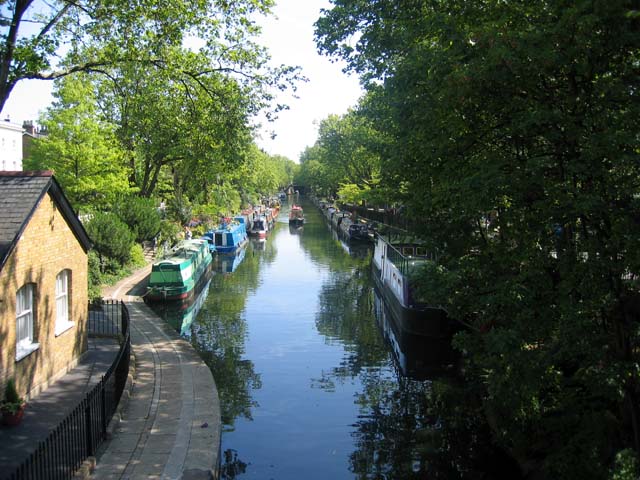
And in fact, this walk is even mentioned as an also-ran in
Roger Ebert's book. For good reason, actually -- this is a part of London
I'd not have guessed existed.
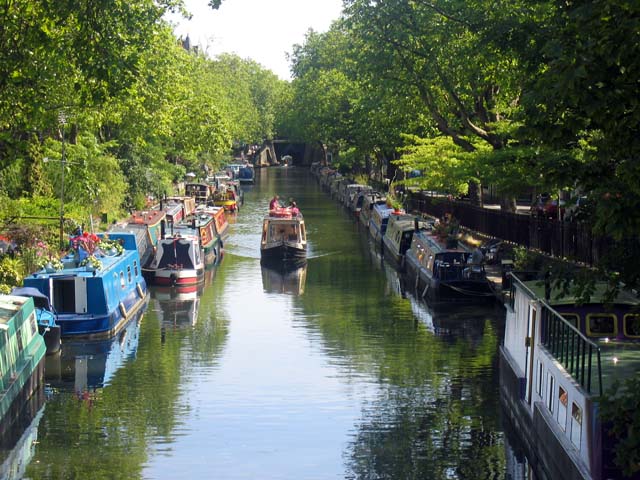
So what exactly is this place all about? It seems that in the 1800's
England was crisscrossed by miles and miles of canal waterways that were used
for commerce. The canals and the locks were narrow, though, so the boats
that traveled the waterways came to be known as "narrowboats." Here's what
Wikipedia, the online encyclopedia, says about it:
Due to reasons of economy and constraints upon 18th century engineering
technology, the early canals were built to a narrow width. The standard
dimension of
canal locks
introduced by Brindley in 1766 were 72 feet 7 inches (22.1 metres) long by 7
feet 6 inches (2.3 metres) wide. This limited the size of the boats (which came
to be called
narrowboats),
and thus limited the quantity of the cargo they could carry to around 30 tonnes.
You can read the entire article here:
http://en.wikipedia.org/wiki/History_of_the_British_canal_system
Wikipedia also talks about Regent's Canal, which passes through Little
Venice:
First proposed by
Thomas Homer in 1802 as a link from the Paddington arm of
the then
Grand Junction Canal (opened in 1801) with the River
Thames at
Limehouse, it was built during the early
19th century after an Act of Parliament was passed in
1812.
Noted
architect and town planner
John Nash was a director of the company; in
1811
he had produced a master plan for the
Prince Regent to redevelop a large area of central north
London – as a result, the Regent’s Canal was included in the
scheme, running for part of its distance along the northern edge
of
Regent's Park.
As with many Nash projects, the detailed
design was passed to one of his assistants, in this case
James Morgan – appointed chief engineer of the canal
company. Work began on
14 October
1812.
The first section, Paddington to
Camden Town, opened in
1816
and included a 251m long
tunnel under Maida Hill east of an area now known as 'Little
Venice' and a much shorter tunnel, just 48m long, under
Lisson Grove. The Camden to Limehouse section, including the
886m long
Islington tunnel and the Regent's Canal Dock (used to
transfer cargo from sea-faring vessels to canal barges – today
known as Limehouse Basin), opened four years later on
1 August
1820.
Various intermediate basins were also constructed (eg: at
Regent's Park, Battlebridge Basin (close to London's King's
Cross station) and City Road Basin).
In 1929 the companies of the Regent's Canal, the Grand
Junction Canal, and the Warwick Canals merged to become the
Grand Union Canal Company. It was nationalised in
1948.
By this time, the canal's importance for commercial traffic was
dwindling, and by the
1960s
commercial vessels had almost ceased to operate – railway and
road transport taking over.
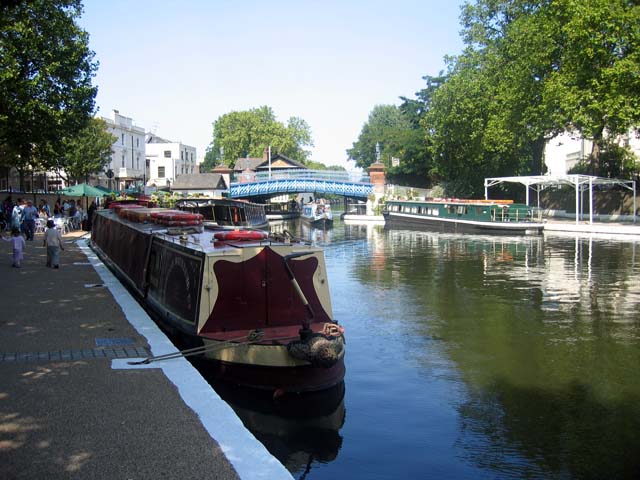
Now that the history lecture is over, let's have a look at
Regent's Canal itself, and some of those beautiful narrowboats. Apparently they
were so narrow that if a man sat in the middle of one and outstretched his arms,
he'd span the entire width.
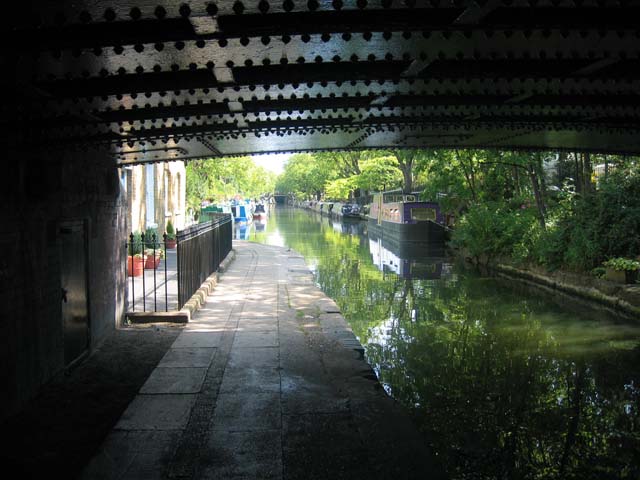
It's like a long marina where people live in their boats and
keep little gardens at their docks.
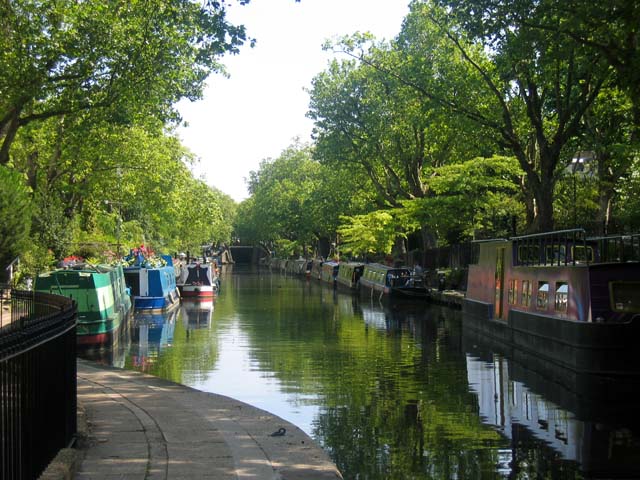
It was a beautiful day for a walk. This was Friday, July
23, 2004.
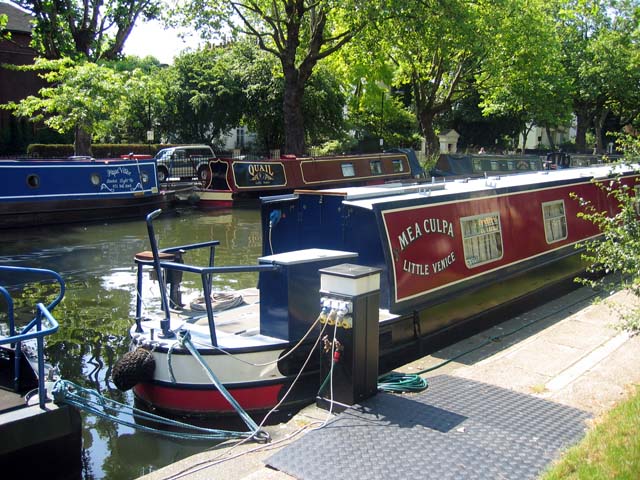
The guidebooks said the boats were brightly colored and bore
clever names.
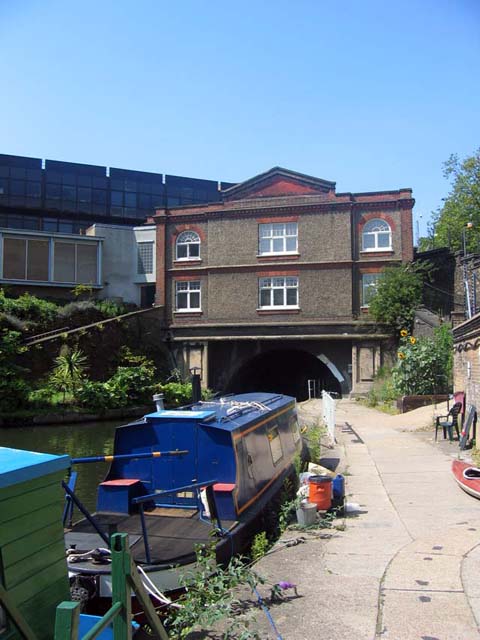
Looking back into one of the several tunnels I walked through.
I had wondered whether I'd be walking through a bad part of town or something,
whether there would be danger. But in fact, there were fellow walkers all
along the way, and the neighborhoods through which I walked were very nice
indeed.
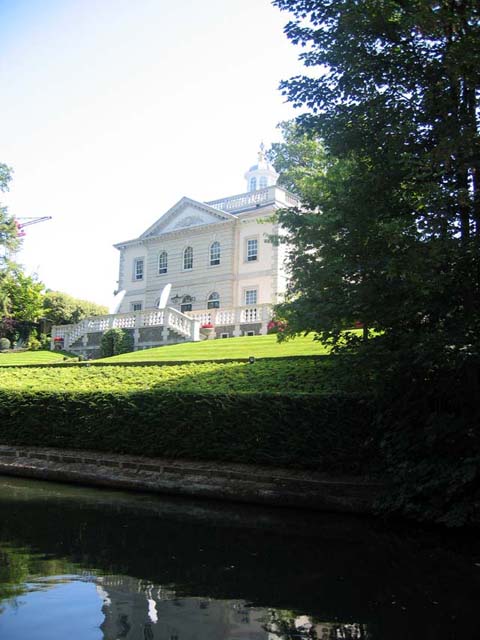
See what I mean? A mansion on a hill.
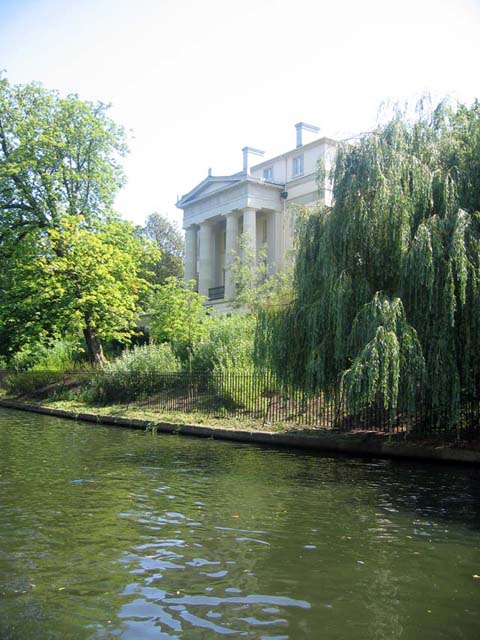
And another. This one with Greek columns. Can't
get much more posh than this place.
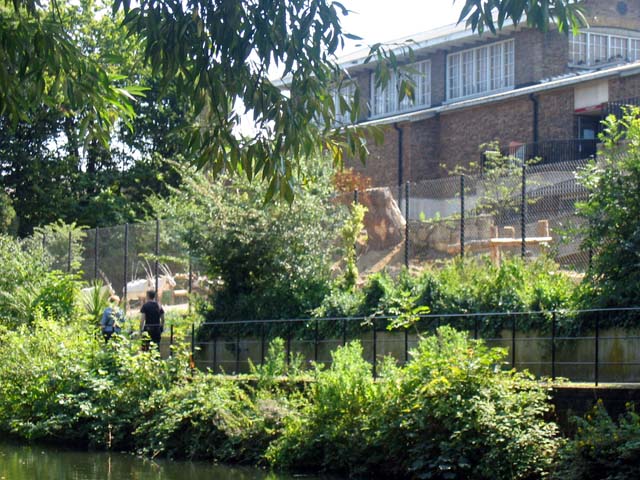
Now we've arrived at the London Zoo. The canal passes right through the
Zoo, but it's separated from the Zoo proper by fences. Still, people
strolling along the canal can see a few of the animals. Over there on the
left are some, well, things with horns.
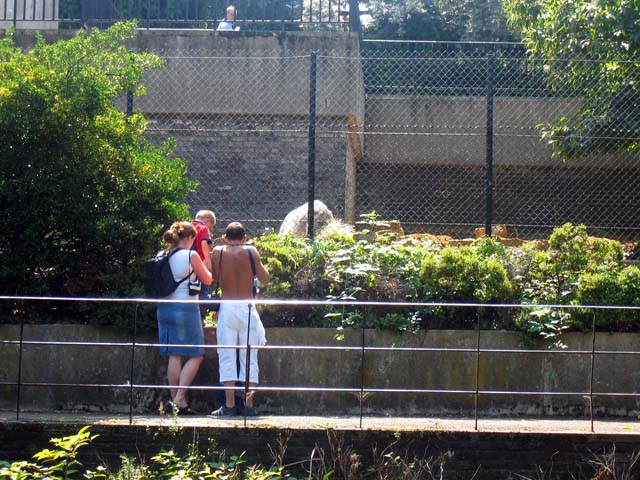
See that gray lump the people are watching? It's a huge
ugly pig with bushy hair growing on its snout.
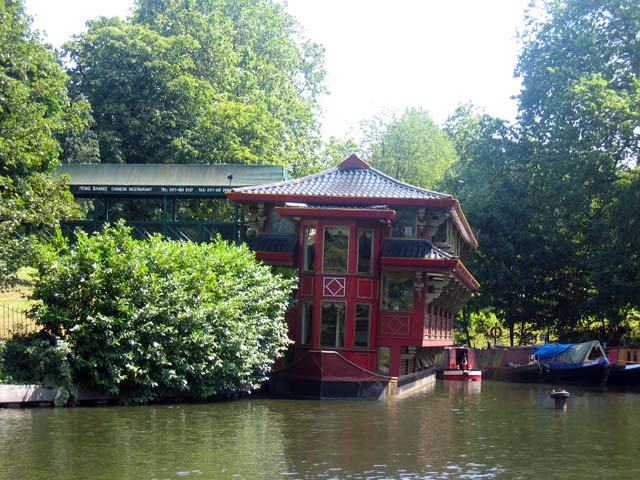
Oh look! A picturesque Chinese restaurant.

Surrounded by narrowboats. Where else but in London?
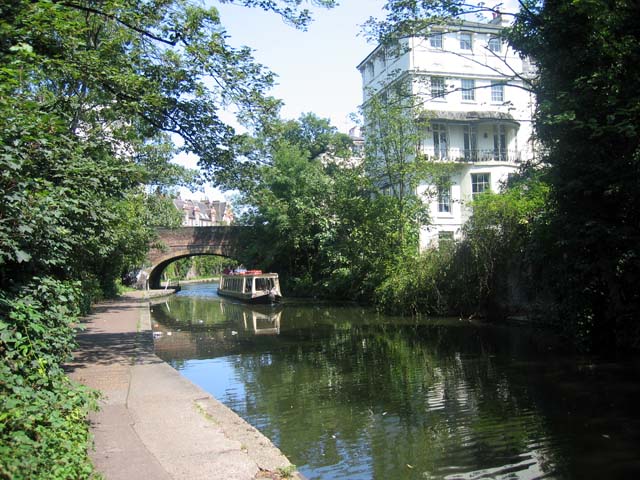
This was a peaceful scene -- that narrowboat gliding toward
me.
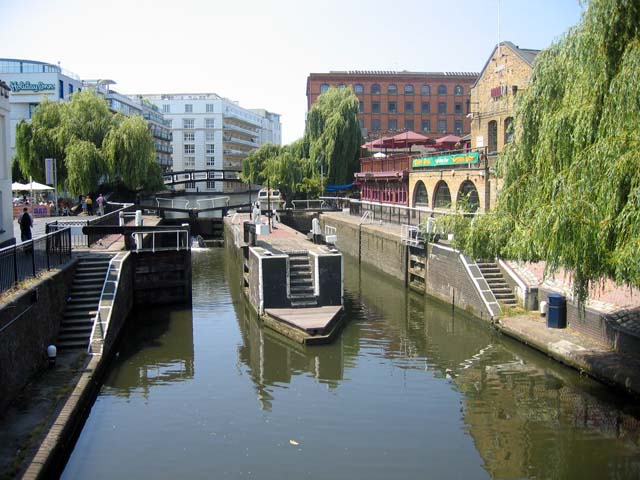
And here we are at the end of the walk -- Camden Town.
This is Camden Locks.
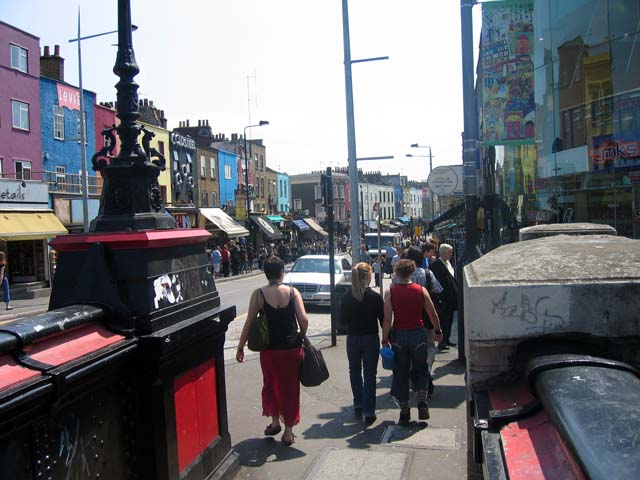
Camden Town itself is a ghastly awful tourist trap, full of cheap t-shirt shops,
souvenir stands, and druggie bazaars. I quickly found a subway station and
rode to Embankment to see Somerset House.


















